
A Catholic mission amid Burma's war
Extracting Father Paul Than
Pillar subscribers can listen to this article here: The Pillar TL;DR
Airstrikes shatter the sky. Churches lie in ruins. Secret arrests sweep people away in the night. Priests recite funeral rites daily. Young men, missing limbs, hobble on crutches, waiting months for prosthetics at clinics the Burmese government bombs into dust.
But amid the chaos, through the haze of suffering, people of Karenni State—one of the smallest ethnic regions in Buddhist-majority Burma—cling to their Catholic faith. They gather beneath green tarps in the jungle, hunker in bomb shelters or caves, finding places for sacred worship.
On Ash Wednesday, after weeks of fierce fighting and fresh graves, Catholic resistance fighters and displaced civilians accept ashes on their foreheads—a stark reminder of mortality in a war where death is never far.
Last month, sitting in a Southeast Asia hotel room, I joined a Zoom call organized by Teresa ]a pseudonym], a Karenni Catholic helping people escape Burma’s war. She briefed me on two priests and a nun I would meet.
The first was Fr. Saverio [also a pseudonym], a former political prisoner preparing to disappear into the jungle—likely for good.
The junta’s targeting of priests began after the 2021 coup, when the military overthrew Burma’s elected government. In central regions like Yangon and Mandalay, resistance took the form of protests. But in the ethnic states—where civil war has flared since 1948—fighting quickly reignited.
Karenni State had seen a decade of ceasefire before the coup. But after the takeover, it, too, erupted. Ethnic groups rearmed, and new forces like the People’s Defense Forces, made up largely of Bamar from central Burma, emerged. In Christian-majority states like Karenni and Kachin, militias resumed war.

The junta responded with brutal crackdowns. Troops shot protesters in the streets. Police raided homes, arresting suspected opposition figures. One Kachin Baptist college student, now in exile, recalled the horror.
“In Yangon, a protest broke out right in front of our house,” he said. “Amid the tear gas and chaos, people ran into our building for shelter. They stayed one night. The next evening, soldiers came in trucks, surrounded the neighborhood, and searched every flat.”
His voice shook. “I don’t know why, but they took my brother. They just took him.”
Like many Catholic clergy and Protestant ministers, Father Saverio followed his fleeing congregation into the jungle. But during a brief return to the city, he and three young parishioners were stopped at a checkpoint. Police found an old photo of a resistance fighter on one of their phones. All four were arrested.
After a few months, Saverio was released—but not forgiven. “We’re watching you,” they told him. “You’re on the list.”
He returned to the jungle, ignoring a government summons. Word soon reached him that he’d be arrested again—not for new actions, but as a warning to others. He chose to remain in hiding, continuing to serve the displaced, until the war ends, whenever that will be.
But even in the jungle, there is no true safety. The junta regularly targets schools, hospitals, churches, and internally displaced people’s camps with airstrikes.
Also, on the Zoom call that day was Sister Mu Roun [a pseudonym], a Kayan religious who supported Father Saverio’s decision to stay.
But the real focus of the call was Father Paul Than.
Teresa and Sister Mu Roun feared he wouldn’t survive much longer. They wanted him out of Burma.
For reasons I still don’t fully understand, Teresa—a woman I had only just met—believed that I was the one meant to help.
Maybe it was because I was the only Catholic ex-soldier she’d encountered doing cross-border work in Burma.
Most of the U.S. veterans, second-generation missionaries, and the few Europeans involved in this kind of work are Protestant. Maybe that’s why she turned to me. And being devout in her faith, perhaps she thought of 1 Corinthians 1:27–28—that God chooses the weak and broken to carry out His will. Whatever the reason, it was a blessing to be part of the mission.
Where Teresa was diplomatic and persuasive, Sister Mu Roun radiated kindness and conviction. She could warm a room with her smile—but you could tell the ruler-wielding nun from Catholic school still lurked just beneath the surface. One look, and you’d start confessing sins you hadn’t even committed yet.
She asked me to meet Father Paul in a secret location in the war zone, where local Catholics had hidden him after a second assassination attempt. I wasn’t even sure I could get into the country—but then she said: “Teresa told me that you like coffee. I will prepare coffee for you when you arrive on Saturday.”
In her mind, I was already coming.
When she found out I’d grown up speaking Italian, she took it as a divine sign. Much of the rest of that Zoom call—and many later conversations with priests and nuns in Karenni—took place in the language of my parents and grandparents.
That’s when I learned about the unusual link between Karenni Catholics and Italy. Italian missionaries—especially from PIME — the Pontifical Institute for Foreign Missions — came to Burma in the 19th and 20th centuries. They left behind not just churches but a culture of Italian names and language among clergy and laypeople. Burma’s first two Catholic martyrs were Blessed Mario Vergara, a PIME priest, and Isidore Ngei Ko Lat, his Karenni lay catechist. Both were killed in 1950 in Karenni State for their missionary work.
Their beatification in 2014 underscored the deep ties between Italy and Burma’s Catholic minority—roughly 700,000 people, less than 2% of the population. But in Karenni State, Christianity is the majority religion, and Catholics form the largest group. It’s one of only three Christian-majority states in Burma, alongside Kachin and Chin. In Karen State, which borders Karenni, Christians make up about half the population. In all three, Baptists are the largest denomination—but in Karenni, Catholics form the majority.
Since the 2021 coup, the military has deliberately targeted churches, especially Catholic ones. Some say it’s because Catholics are harder for the junta to control. Others suggest that large cathedrals simply make easier targets from the air. Whatever the reason, hundreds have been destroyed.
In Karenni State, which falls under a single diocese based in Loikaw, 36 of 41 parishes have been abandoned after bombings or occupation by the Burma Army.
On Nov. 27, 2023, Bishop Celso Ba Shwe was forced to flee the diocesan headquarters—the Christ the King Cathedral complex—when junta forces overran Loikaw.
The compound had sheltered up to 1,300 displaced people, but it became too dangerous to remain. Bishop Ba Shwe waited until the last possible moment, finally leaving the complex with the wounded, the elderly, and the disabled, helping them reach the relative safety of the jungle. From there, he continues to oversee 98 priests across the state—most without churches. They now minister in internally displaced persons’ camps, where nearly 80% of Karenni State’s population lives in makeshift shelters.
Father Paul Than ran into trouble with the Burma Army because he was caring for displaced people. At one point, he oversaw a camp of 600, and the junta accused him of aiding rebels. On the government’s social media, they called him a terrorist and even claimed he had founded the Karenni Nationalities Defense Force. Then they tried to kill him—twice.
The first airstrike destroyed his home. Supporters relocated him to a jungle camp beside a makeshift church. When that location was bombed, Teresa stepped in, offering to help him flee. Sister Mu Roun urged him to accept.
The next day, Teresa connected me with Khun Bedu, the KNDF leader—the very group Father Paul was falsely accused of founding. When I asked if the story was true, Bedu just laughed at how preposterous the claim was.
At 41, Khun Bedu doesn’t fit the mold of a typical militia leader. He speaks fluent English, has a vision for democratic governance, and has united nearly all armed factions in Karenni under the Interim Executive Council—the civilian authority administering the state until elections can be held.
His Catholic upbringing shapes his worldview. “My wife is also Catholic. We pray every day,” he told me. “My mother is very devout and organized prayers and activities at the church.” Like Father Saverio, he was once jailed—four years for leading a youth movement. “Prison made me a better revolutionary,” he said. “We promoted a lot of human rights there.”
In a country of over 120 armed groups, his emphasis on unity is rare. “I’ve always worked well with all religions,” he said. “But I always protect the Catholics.”
Despite discrimination from junta supporters, Bedu has built bridges—with monks, pastors, and priests—earning trust across the region. That unity has translated into military gains. The KNDF now controls about 70% of Karenni State.
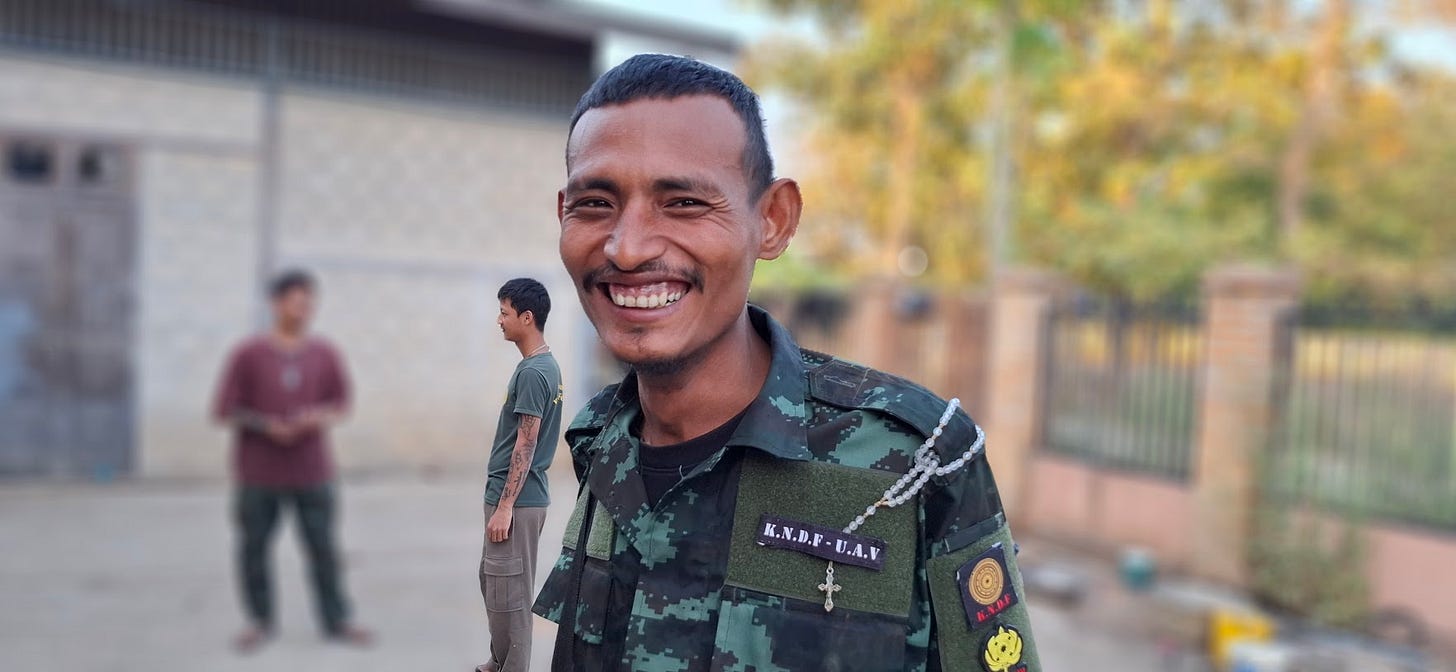
His seminary background, he said, helped him build a functioning government structure. “The church taught me organization.”
Inside the liberated zone, religious and ethnic freedom reign. But airstrikes still kill indiscriminately. After four years of war, most casualties come from the sky. The resistance has no planes or significant anti-aircraft weapons. Every man, woman, and child lives under the shadow of drones and jets.
Bedu arranged for his soldiers to take me to Demoso, the largest city in the liberated zone. We drove for countless hours on broken roads, with soldiers in the back of the SUV watching for aircraft. When planes were spotted, we pulled under trees, abandoned the vehicle, and hid.
Outside, the explosions never stopped. Each one made you wonder how many had just died. With no power, no cell service, and no internet, we wouldn’t know until we reached a military base with Starlink—and checked for reports.
During the three weeks I spent with Khun Bedu and the KNDF, I visited IDP camps where suffering was visible everywhere.
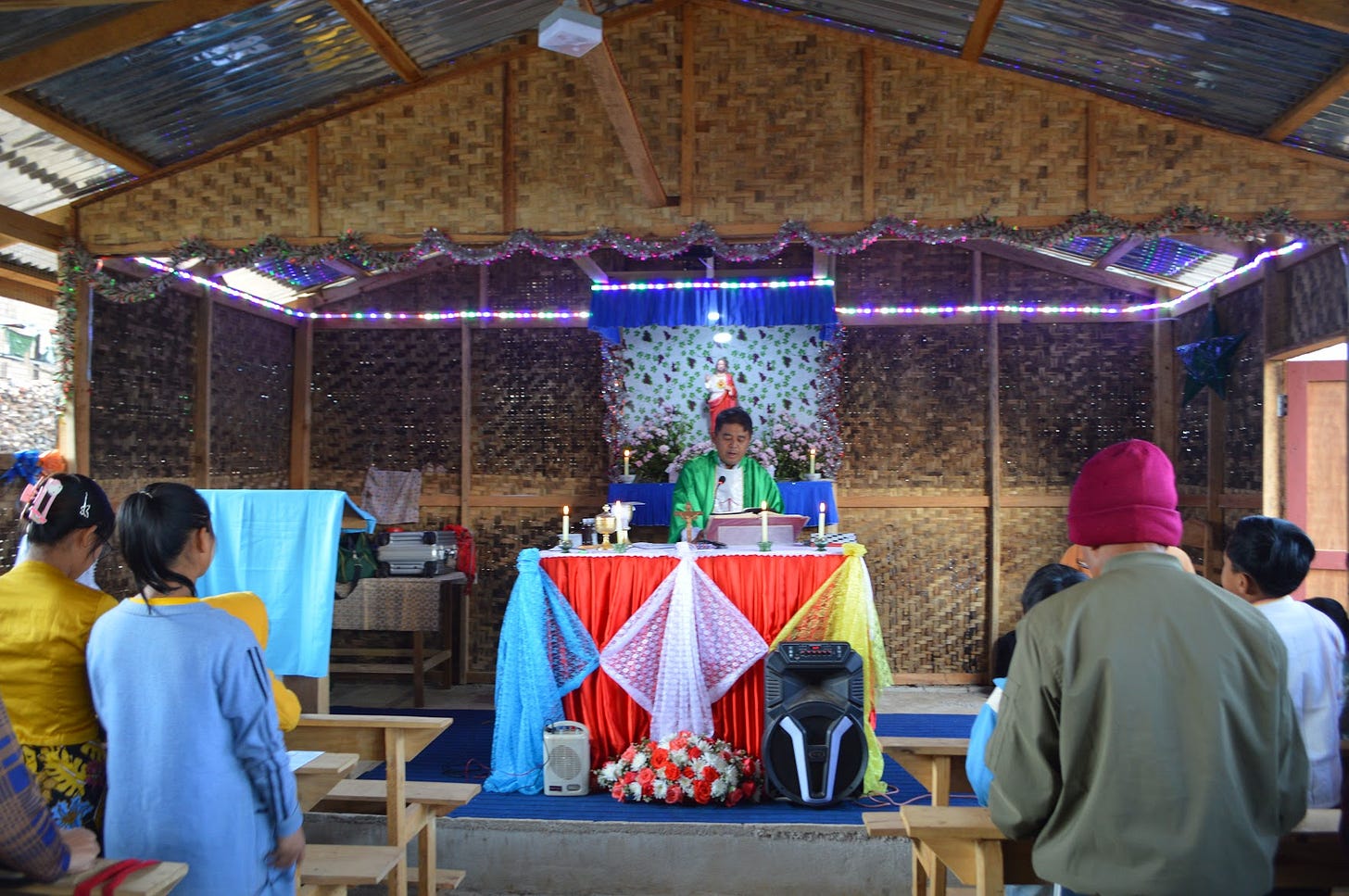
The people had no jobs, no income, and barely enough food to survive. Internally displaced persons aren’t considered refugees under the UN’s definition, so they receive little or no international support. What aid existed for them came from the Interim Executive Council, the KNDF, the Catholic Church, diaspora donations, and a few small faith-based organizations. Even combined, it was only enough to meet about half of the UN-recommended caloric intake — roughly 35 pounds of rice per person, per month.
At schools, children studied under tarps and were trained to run to the nearest bomb shelter when jets flew overhead. The headmasters said they divided students into shifts and placed them in separate locations to avoid losing too many in a single airstrike.
Three of the clinics we visited were attacked either while we were there or just after. In one case, the government dropped 13 pieces of ordnance trying to destroy a tiny temporary clinic that didn’t even have a doctor.
Driving closer to the front lines to document bombed churches, we turned down a road just as explosions grew louder and jets began to crisscross the sky. Trucks full of armed men were stuck in gridlock in front of a house. There was shouting and panic as they tried to clear the road before bombs dropped. I suddenly realized one of the men was Caucasian. Relief washed over me when I saw the patches on his shoulder: Free Burma Rangers — FBR — a faith-based cross-border aid organization.
As the jets came dangerously close, FBR leader David Eubank pulled me into a house that was serving as a forward surgical unit. I walked in just as volunteer doctors were amputating the foot of a 20-year-old Christian soldier who had stepped on a landmine. Two medics had been killed trying to rescue him—both young, one Catholic and one Baptist, just 19 and 20 years old.
Over the next several days, I moved between Rangers, priests, and soldiers—attending funerals, responding to an airstrike on a school and a clinic. Thankfully, no one was hurt in that attack, but both buildings were destroyed.
At one point, I joined the Rangers to help evacuate wounded from a hospital targeted by the Burma Army. One of the patients was a 20-year-old soldier who had lost part of his leg. He had both internal and external injuries, a catheter, and was unable to eat solid food. Suicidal and in pain, he was returned to his unit per standard operating procedure. But it turned out his unit wasn’t a professional KNDF base—it was a People’s Defense Force camp, mostly made up of college students from Shan State who had joined the revolution but had no resources or medical training. The boy needed specialized, round-the-clock care. The kids in the camp, living under tarps, couldn’t provide it. He died two days later.
The morning after the hospital evacuation, I was summoned to meet Sister Mu Roun at a restaurant near a Catholic church in an IDP camp. True to her word, she brought me excellent coffee and half a liter of honey from her convent. She hugged me, said a prayer, and told me how the Free Burma Rangers had once saved her life—evacuating her and thirteen students just before a junta attack. We called David Eubank, and Sister Mu Roun was thrilled to thank him in person. They exchanged blessings over the phone.
She spoke about her ministry with drug-addicted young men. I could tell she was effective because she genuinely loved them—but I also suspected she didn’t hesitate to smack them with a ruler when needed.
Then her tone changed. She was heartbroken over what the war was doing to her people—especially the youth.
“How do we raise children? How do they study? How do they understand religion, socialize, or get an education?” Sister Mu Roun asked, her voice cracking. “It’s really painful for me. Sometimes... this conflict makes me—” She trailed off, overwhelmed.
The next day, Khun Bedu sent word: he wanted me and the soldiers accompanying me to meet him at a remote location late that night. We drove two and a half hours through jungle roads and dry riverbeds in total darkness. When we finally arrived, I was shocked to find a barbecue underway. As I stepped out of the vehicle, a group of smiling nuns and priests greeted me—in Italian, no less. And there in the center stood Father Paul Than.
We hugged for a long time. I was flooded with relief when he said he had decided to leave the country—not for his own safety, but because he feared the next bomb dropped on him might kill innocent civilians.
Behind the scenes, Khun Bedu had arranged for Father Paul to be extracted the next day. The plans were secret, and no one breathed a word until he was across the border.
Father Paul and I took a quick selfie, which I sent to Teresa and Sister Mu Roun the next day, after he had made it out safely. They were ecstatic. “Bravo, bravo, Antonio!” Sister Mu Roun cheered—but the truth was, I had done very little. It was all Khun Bedu and Teresa, who had brought us together.
Before they left, I handed Khun Bedu the phone so he could speak with Sister Mu Roun. When she heard his voice, she said, “I’m grateful to God that we have a very strong man working on the front line for the Karenni people.”
I couldn’t have agreed more. After nearly twenty years of reporting on this war, Khun Bedu was the first real glimmer of hope I had seen—that democracy and civil society might actually be within reach, at least in one of Burma’s ethnic states.
Then Sister Mu Roun said something I’ll carry with me for the rest of my life.
“Sometimes, I thank the leader who kills people. I don't want to mention the name,” she said, referring to the dictator Min Aung Hlaing. “Sometimes, I thank him because the bad thing can be a good chance—to work for the people, to serve the people.”
She spoke about faith, and how suffering had opened doors to help others and lead them to God.
“To lead people to see and overcome their troubles—and to take a new step, to find a new weapon in life.”

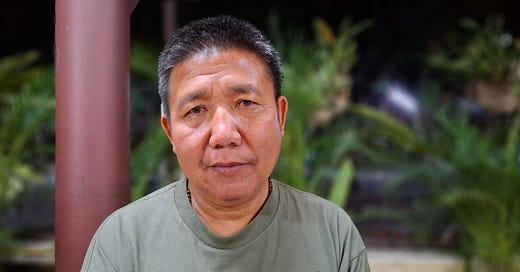


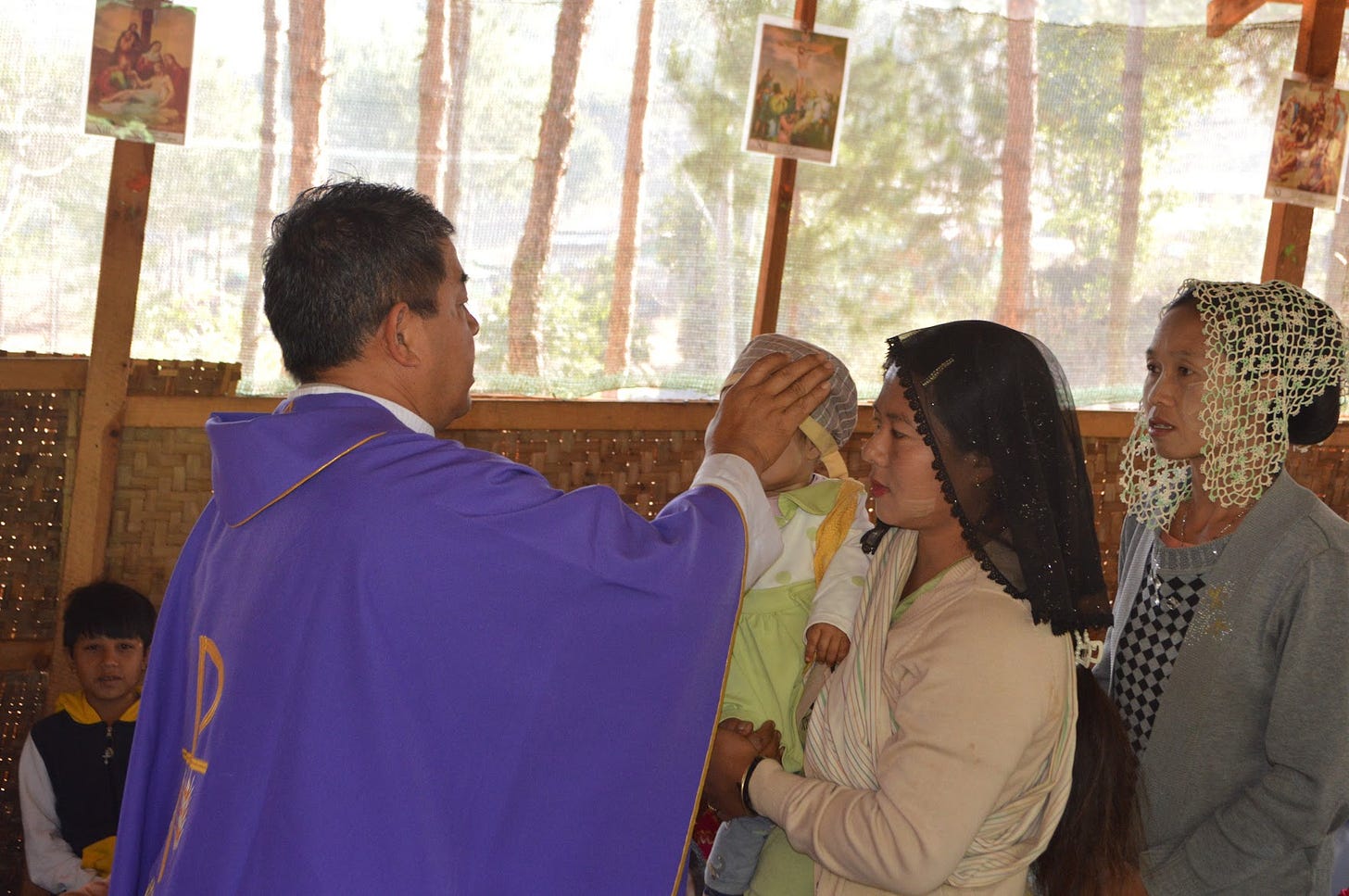
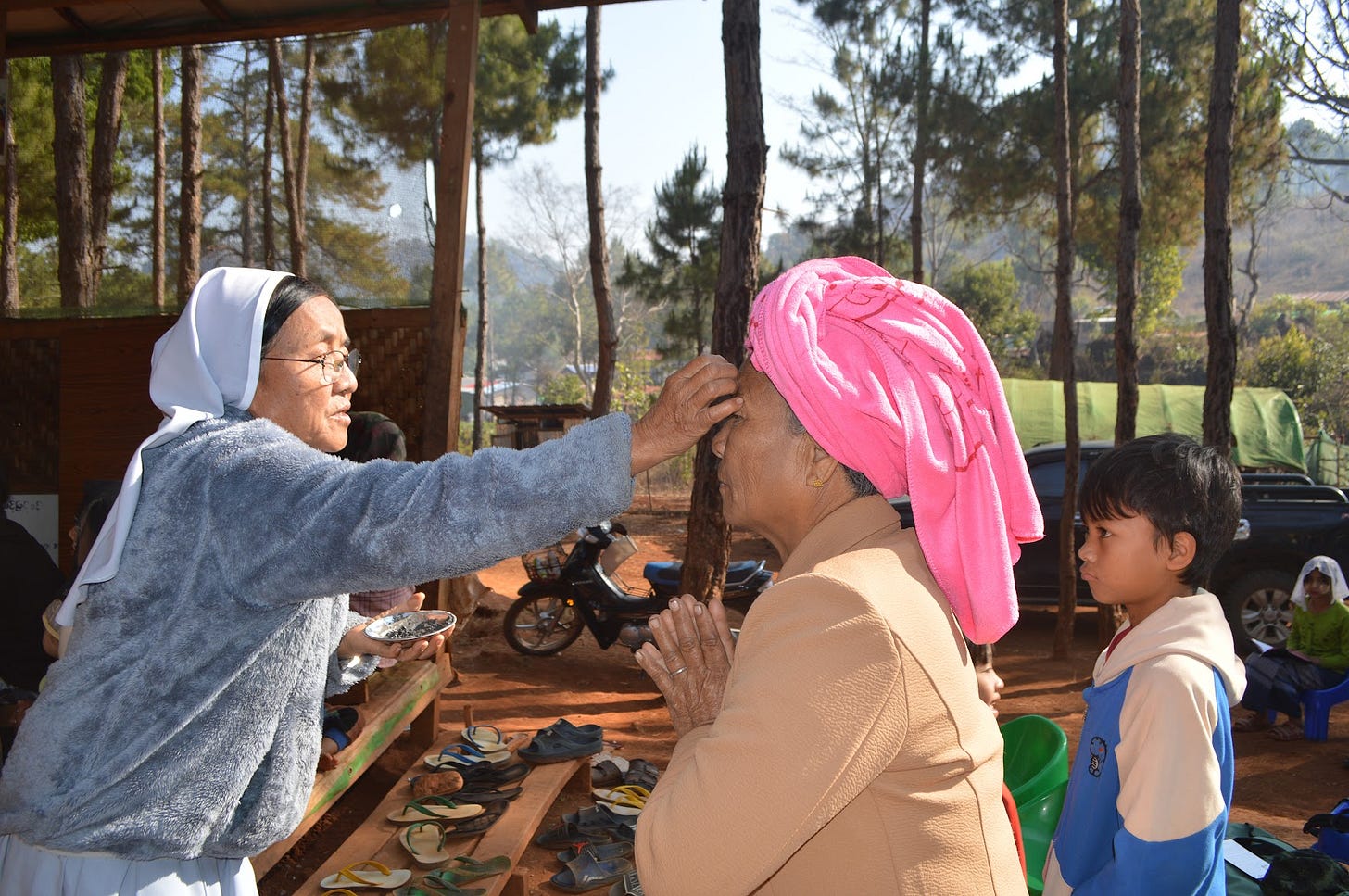
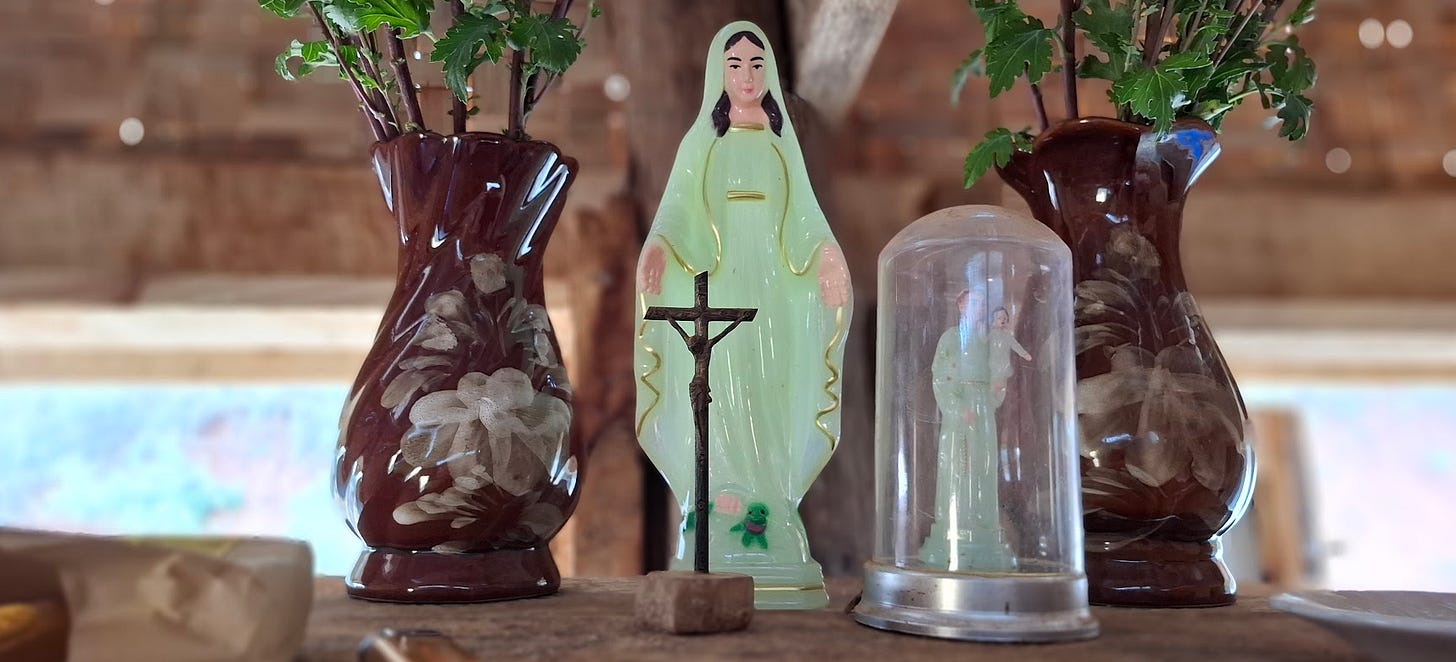
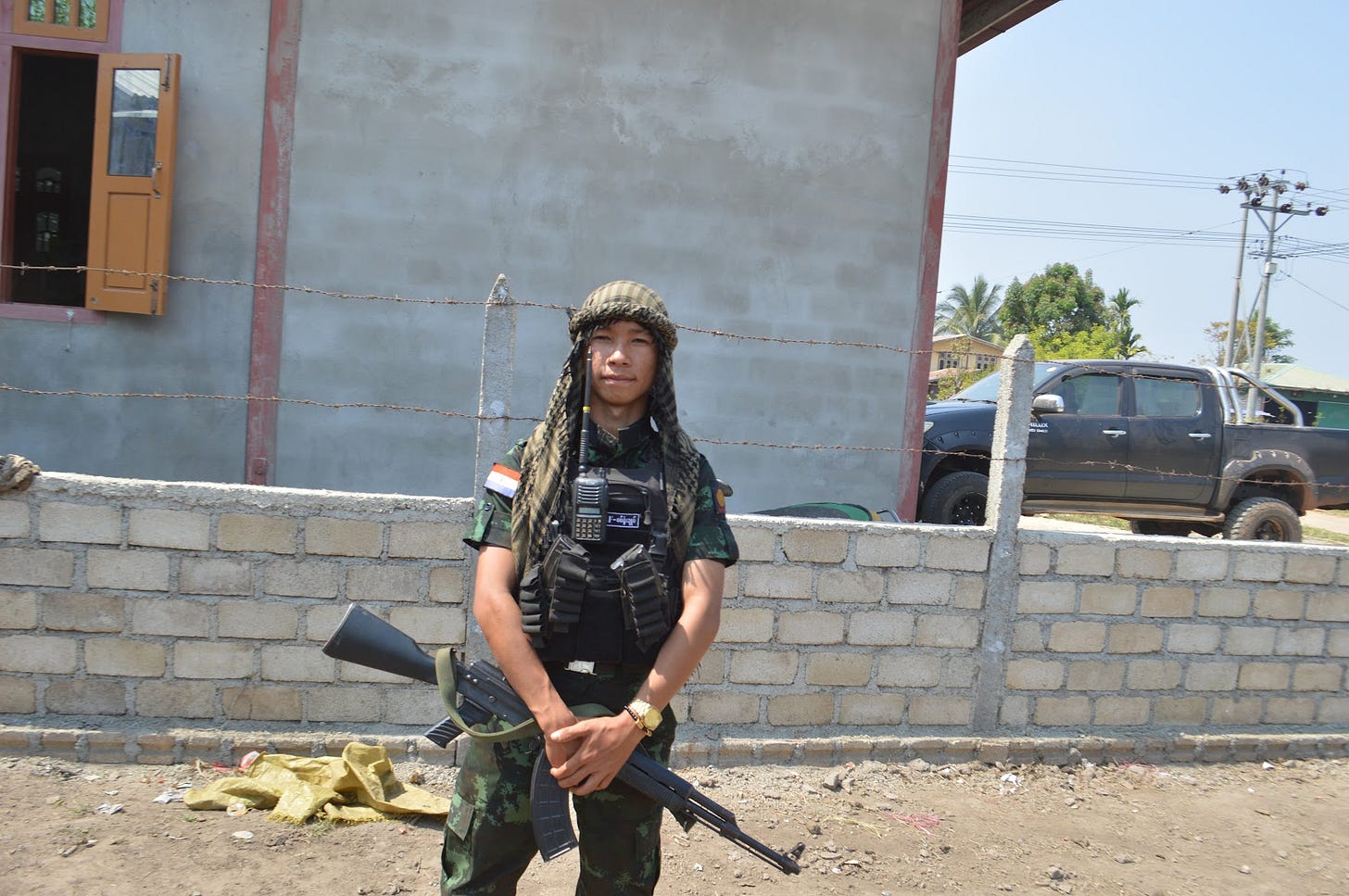
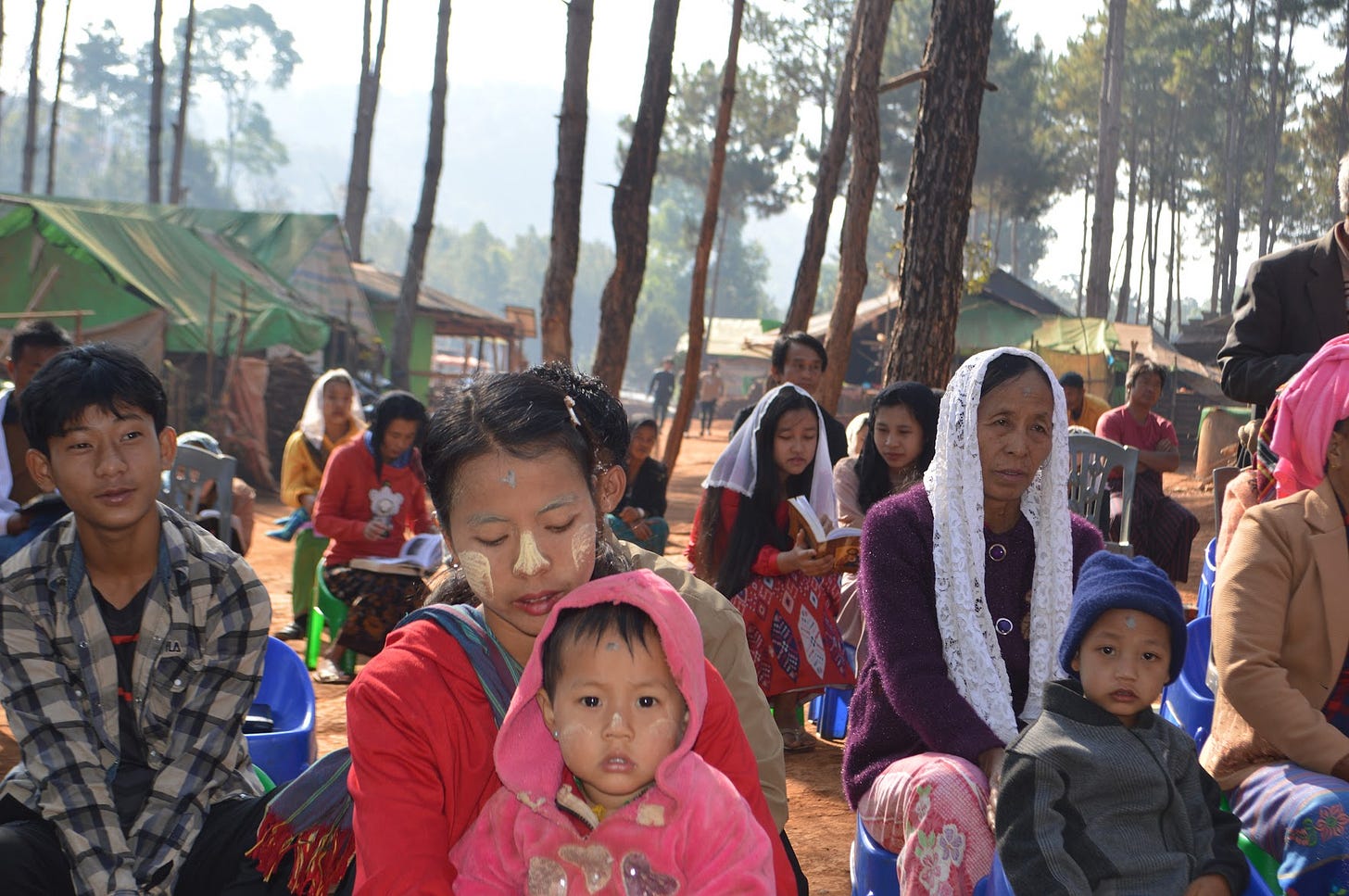
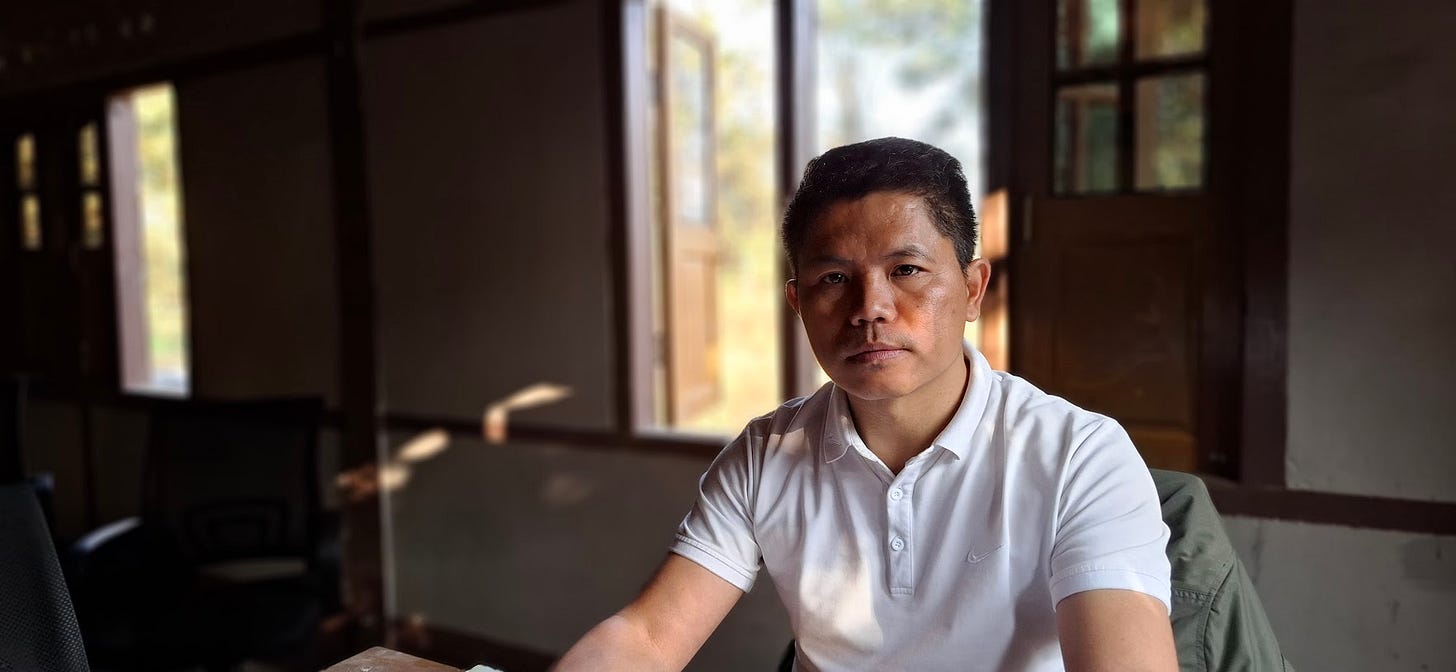

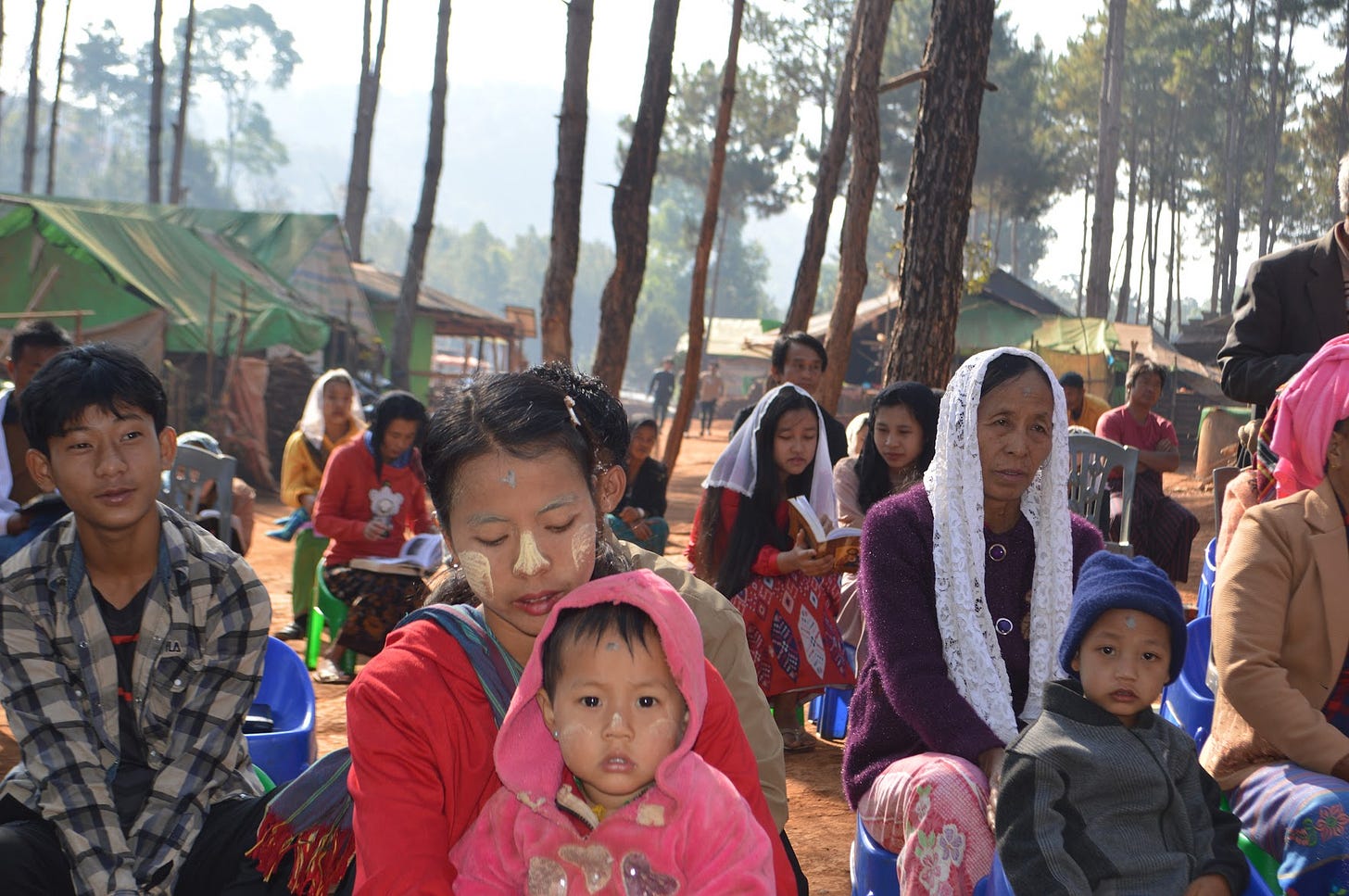








Where can one go to donate to the Church in Burma?
Incredible reporting. Awesome job with this Kyle. I have known nothing about what is going on in this area of the world previously, and I'm grateful for you bringing Burmese Catholics to our attention. 🙏🙏🙏